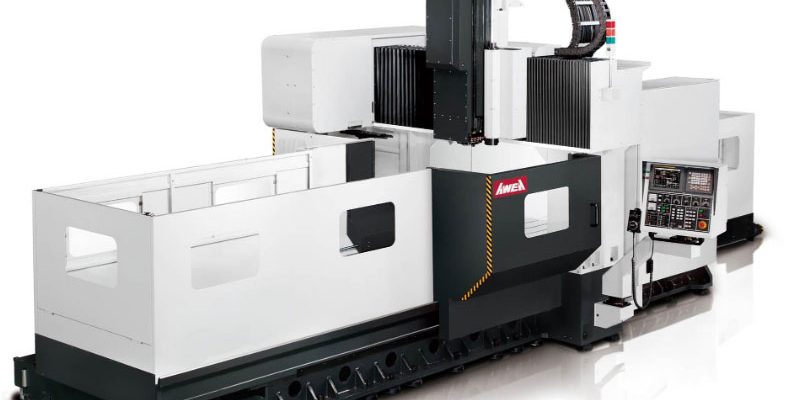Comprehensive Guide to CNC Machine Tools
CNC (Computer Numerical Control) machine tools are one of the core technologies in modern manufacturing. By utilizing computer control, these machines achieve high precision, high efficiency, and automated machining of complex components. This article provides an in-depth overview of CNC machine tools, covering their definition, types, working principles, key features, applications, and future trends.
1. Definition of CNC Machine Tools
A CNC machine tool is a piece of equipment that enables automated machining through computer-controlled movements. The CNC system receives and interprets numerical control codes (such as G-codes and M-codes) to precisely control various axes and the spindle for cutting operations.
2. Types of CNC Machine Tools
CNC machine tools can be categorized into several main types based on their functionality and structure:
1). CNC Lathes
Used primarily for machining rotational parts. By moving the cutting tool along the X and Z axes, CNC lathes can perform operations such as turning, boring, facing, and threading.
2). CNC Milling Machines
Designed for machining flat surfaces, slots, gears, and complex curved surfaces. These machines operate along X, Y, and Z axes to achieve intricate cuts.
3). CNC Machining Centers
Multi-functional machines that can perform milling, drilling, tapping, and other operations. They often feature automatic tool changers (ATCs), allowing multiple processes to be completed in a single setup.
4). CNC Grinding Machines
Used for high-precision surface finishing through high-speed grinding wheel rotations. These machines ensure excellent dimensional accuracy and surface quality.
5). CNC Electrical Discharge Machines (EDMs)
Designed for machining hard materials and complex shapes. These machines remove material through electrical discharge, enabling precise and intricate processing.
3. Working Principles of CNC Machine Tools
The operation of a CNC machine tool can be summarized in the following steps:
1). CNC Programming
Using CAD/CAM software, engineers create 3D models of the workpiece and generate CNC codes containing tool paths and cutting parameters.
2). Program Transmission
The CNC program is transferred to the CNC system via data interfaces such as USB or Ethernet.
3). Machine Setup
Tools and workpieces are installed and calibrated to ensure precise positioning and alignment.
4). Machining Execution
The CNC system controls the machine’s movements according to the programmed instructions, executing precise cutting operations.
4. Quality Inspection
Once machining is complete, the workpiece undergoes dimensional and surface quality inspections to ensure compliance with design specifications.
5. Key Features of CNC Machine Tools
1). High Precision
CNC machine tools achieve exceptional accuracy, meeting stringent dimensional tolerances and geometric requirements.
2). High Efficiency
These machines automate complex machining processes, enhancing production efficiency and reducing lead times.
3). High Flexibility
By simply changing the CNC program, manufacturers can switch between different workpieces, making CNC machines ideal for small-batch, multi-variety production.
4). Stability and Consistency
Automated control minimizes human errors, ensuring consistent and repeatable machining quality.
6. Applications of CNC Machine Tools
1). Aerospace Industry
The aerospace sector demands high-precision and complex components. CNC machining enables the production of turbine blades, structural airframe parts, and other critical aerospace components.
2). Automotive Manufacturing
CNC machines are widely used in the automotive industry for machining engine components, transmissions, and chassis parts, ensuring high-performance and durable automotive systems.
3). Medical Equipment
Medical devices require extremely high precision and smooth surface finishes. CNC machining is essential for producing artificial joints, dental instruments, and implants, ensuring reliability and safety.
4). Mold Manufacturing
CNC machines play a crucial role in mold manufacturing, where high-precision and intricate surface details are required. These machines improve both production efficiency and product quality.
5). Electronics Industry
In electronics manufacturing, CNC machining is used to produce precise electronic components and enclosures, enhancing product performance and aesthetics.
7. Future Trends in CNC Machine Tools
1). Intelligence and Automation
The future of CNC machining will be driven by AI and machine learning, enabling adaptive machining, predictive maintenance, and smart optimization to enhance efficiency and quality.
2). Higher Precision and Speed
Ongoing technological advancements will push CNC machining towards even higher precision and faster processing speeds, meeting increasing industrial demands.
3). Multi-functionality
CNC machines are evolving into multi-functional systems capable of performing various machining operations within a single setup, further improving productivity and flexibility.
4). Digitalization and Networking
The integration of IoT (Internet of Things) will enable interconnected CNC machines, facilitating real-time monitoring, remote diagnostics, and smart manufacturing ecosystems.
Conclusion
CNC machine tools are fundamental to modern manufacturing, offering high precision, efficiency, and flexibility. They are extensively used in aerospace, automotive, medical, mold manufacturing, and electronics industries. With ongoing advancements in intelligence, digitalization, and multi-functionality, CNC machining will continue to play a pivotal role in future manufacturing. Understanding and mastering CNC technology not only enhances industrial competitiveness but also drives the overall progress of manufacturing industries.

